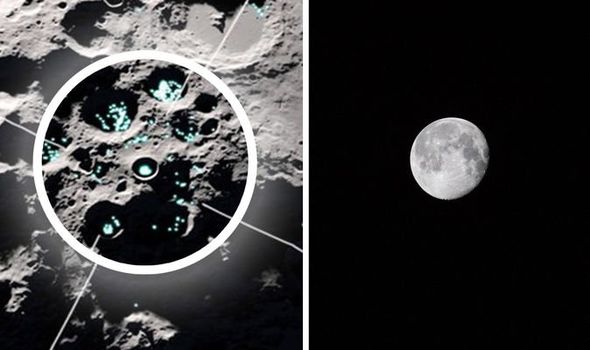 |
The US space agency NASA has announced that it has found evidence of water on the moon.
NASA has announced its new and surprising discovery that they have found conclusive evidence of water on the lunar surface a few days ago. Confirmation of the discovery of water molecules on the lunar surface also raised hopes for NASA's plan to build a base station there.
The aim is to operate this base station using the natural resources on the Moon. This discovery has been published in two separate papers in the Science General Nature Astronomy.
Although there were signs of water on the surface of the moon earlier also, but earlier discoveries only found signs of water in the dark side of the moon which always in the shadow. But this time, scientists have found evidence of water in the part of the moon where the sun's light direct falls.
"The amount of water is roughly equivalent to a 12-ounce bottle of water in a cubic meter of lunar soil."
That is, the Moon has less than half a liter (0.325 liters) of water in a cubic meter volume or area. Honniball is a postdoctoral fellow at NASA's Goddard Space Flight Center in Maryland.
Honniball's NASA colleague Jacob Bleacher says researchers need to understand the nature of water-logging. They believe that this will help them decide how much natural resources will be accessible if some kind of discovery is made on the moon in the future.
Signs and facts about water on the Moon have been found before, but this new discovery suggests that it is present in much more volume than earlier discoveries estimated.
According to planetary scientist Hannah Sargeant of the Open University in Milton Keynes,
"This discovery has given us more options for possible sources of water on the Moon."
"Where should the base station on the Moon be? this will depend to a large extent on where the water is."
The space institute says that according to their plan they will send the first woman and the next man to the lunar surface by the year 2024. This plan is a link to NASA's preparation for man's 'next big step' on Mars in the year 2030.
How did scientists find water on the moon?
For this discovery, an infrared telescope (airborne-infrared telescope) was first created, called Sophia. It is an observatory that flies high above the atmosphere and provides a fairly clear view of the solar system on a large scale. With the help of infrared binoculars, the researchers identified the 'signature spectrum' of water molecules.
Researchers speculate that it froze in glass bubbles on the Moon or among particles present on the surface, and that is why it is present despite the harsh environment.
In another study, scientists studied an area always in darkness, known as a cold trap. There is a possibility of water accumulating here or being present permanently. Scientists found these cold traps on both poles and concluded based on them that "the surface of the moon has the potential to bind water over an area of about 40,000 square kilometers."
What does this discovery mean?
According to Dr. Sargent, with this discovery, the list of places where the base station can be built.
There are plans to send several missions to the polar regions of the Moon in the coming years but there are also plans to build permanent accommodation on the Moon in the coming years. This is a long-term and ambitious plan.
According to the Open University researcher, "This can certainly have some impact. That gives us time to do some research. "
"However, we do not have much time because we are already working on a plan to build a base station on the moon and we are moving ahead but it is certainly promising."
Experts say that once we understand how to remove it, this icy water surface present on the lunar surface can be helpful in preparing the basis for the economy on the moon.
If this happens, it would be cheaper to make rocket fuel on the moon than to send a rocket from the earth to the moon. In such a situation, if future researchers on the moon wish to return to Earth, they will be able to separate hydrogen and oxygen from water and use it as fuel.





0 Comments